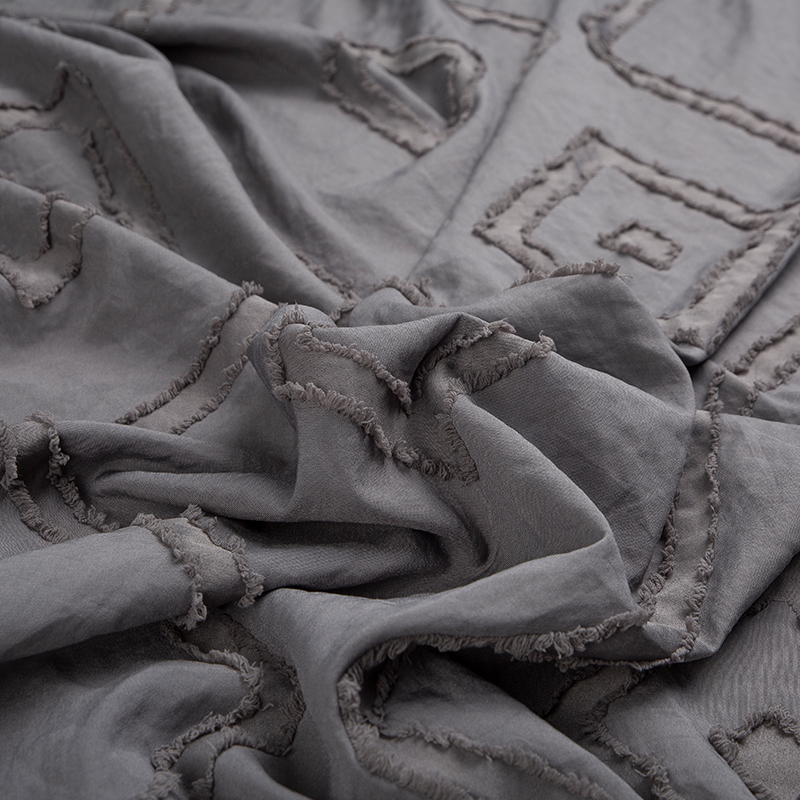Premium quality since 2002!
Microfiber fabric has become a staple in modern textiles, found in everything from high-performance cleaning cloths to luxurious bedding. Its unique properties, derived from a sophisticated manufacturing process, have made it a versatile and popular choice. But what exactly is microfiber, and what makes it so special?
What Is Microfiber Fabric?
At its core, microfiber fabric is a synthetic material made from extremely fine fibers. The term “microfiber” refers to the diameter of the individual fibers, which must be less than one denier—a unit of measurement for fiber thickness. To put that in perspective, a single microfiber is often thinner than a strand of silk and 100 times finer than a human hair.
The most common types of microfiber are made from a blend of polyester and polyamide (nylon). Polyester provides the structure and durability, while polyamide adds absorbency and a soft feel. The combination of these two polymers creates a fabric with exceptional characteristics.
The Unique Properties of Microfiber
The magic of microfiber fabric lies in its microscopic structure. During manufacturing, the fibers are split, creating a vast network of tiny, wedge-shaped filaments. This unique shape and the sheer number of fibers in a given area result in several key properties:
- Exceptional Absorbency: The high surface area and porous nature of split microfibers allow them to hold up to seven times their weight in water. This makes them far more absorbent than traditional cotton.
- Superior Cleaning Power: The fine, sharp edges of the split fibers act like tiny scrapers, effectively lifting and trapping dust, dirt, and bacteria without the need for harsh chemicals. This is why microfiber fabric is the material of choice for professional cleaning.
- Softness and Durability: Despite its cleaning prowess, microfiber is incredibly soft to the touch, making it ideal for bedding, clothing, and upholstery. It is also highly durable, resisting shrinking, stretching, and wrinkling.
- Hypoallergenic: The dense weave of the fabric prevents dust mites and allergens from penetrating, which is a major benefit for those with allergies or asthma.
Common Applications of Microfiber
The versatility of microfiber fabric has led to its widespread use across many industries:
- Cleaning: This is perhaps its most well-known application. Microfiber cloths, mops, and dusters are highly effective for cleaning surfaces, glass, and electronics.
- Home Textiles: Microfiber fabric is a popular choice for bed sheets, blankets, and towels due to its softness, absorbency, and resistance to stains.
- Apparel: From sportswear to outerwear, microfiber is used for its moisture-wicking properties and lightweight feel.
- Upholstery: Its durability and resistance to wear and tear make it an excellent choice for furniture coverings.
- Automotive: Microfiber fabric is essential for car detailing, used for everything from washing and drying to polishing and waxing.
Caring for Your Microfiber
To maintain the integrity and performance of your microfiber fabric products, proper care is essential:
- Washing: Always wash microfiber in cold or warm water with a gentle detergent. Avoid using bleach or fabric softener, as these can clog the fibers and reduce their effectiveness.
- Drying: Air-drying is best. If you must use a dryer, use a low-heat or no-heat setting. High heat can melt the synthetic fibers.
- Avoid Fabric Softener: Fabric softeners contain waxes and oils that coat the microfibers, making them less absorbent and less effective at trapping dirt.
The Environmental Conversation
As with any synthetic material, the environmental impact of microfiber fabric is a topic of concern. The primary issue is the shedding of microplastics during washing. These tiny plastic fibers can enter waterways and contribute to pollution. To mitigate this, consider using a laundry bag designed to capture microplastics or a special filter in your washing machine. Choosing high-quality microfiber products and caring for them properly can also extend their lifespan, reducing the need for frequent replacement.
In summary, microfiber fabric is a revolutionary material that combines durability, softness, and incredible functionality. Its unique properties have earned it a place in countless products, making our lives cleaner, more comfortable, and more efficient.

 English
English 简体中文
简体中文










